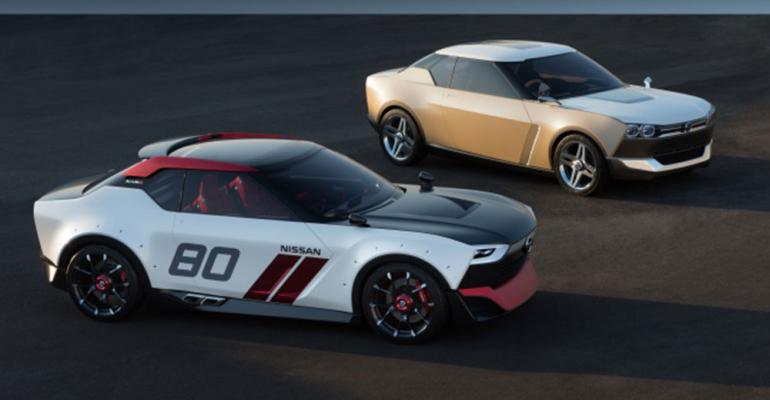NASHVILLE, TN – Despite reports it is on the way soon, a small Nissan sports car remains an uncertainty, a top company official says.
Pierre Loing, vice president-product planning for Nissan Americas, says a small, rear-wheel-drive sports car, affordable enough to compete with the under-$30,000 Subaru BRZ and Scion FR-S, is a conundrum for the automaker, whose current RWD platforms underpin much more expensive models.
“It’s not easy to do, (and) if you do something like this and you manage to do a vehicle at (a low) price, what else would you do on this platform? Because frankly to do a platform for 50,000 or 60,000 (units) a year – it’s not worth it,” Loing tells WardsAuto here during a recent Nissan full-line media event.
Reports, based on comments of Nissan Executive Vice President Andy Palmer, have suggested Nissan would retail a production version based on one of two concepts as soon as 2016.
The IDx Freestyle and IDx Nismo concept cars debuted at last year’s Tokyo auto show, with both theoretically powered by turbocharged 4-cyl. gasoline engines. The Freestyle was seen by Nissan as well-suited for a 1.2L-1.5L turbo 4-cyl., while the Nismo’s likely engine would be a 1.6L with direct injection.
“Will (the IDx) become something or not is debated, but certainly not (by 2016),” Loing says.
Subaru parent Fuji Heavy Industries and Toyota co-developed the BRZ and FR-S, known as the Toyota 86 overseas, due to the same issues Loing cites.
Both Japanese automakers had the desire to create an affordable, RWD sports car, but had difficulty making the business case work for the traditionally low-volume vehicle type.
Subaru led engineering of the vehicles, while Toyota headed design, although it also contributed its D4S port- and direct-injection system for each car.
Loing believes Nissan’s Juke CUV is a competitor of sorts to the BRZ and FR-S, as it has similar performance characteristics, as well as a DI turbocharged 4-cyl.
The Juke’s 1.6L makes 188 hp and 177 lb.-ft. (240 Nm) of torque. The BRZ and FR-S deliver a similar 197 hp and 150 lb.-ft. (203 Nm) of torque from their turbocharged 2.0L 4-cyl. boxer engines.
Cube Future Also Cloudy
Meanwhile, Loing says a next-generation Nissan Cube also is up in the air, at least for the U.S.
Nissan does not include the compact box in its ’15 U.S. lineup revealed last week.
Nissan has said a new Cube is due in Japan for ’16.
“We have a model-year ’14 (in the U.S.); there will be an announcement on ’15 to come,” Loing says.
Cube sales, always modest, have fallen this year, and throughout the vehicle’s U.S. run it has lagged greatly behind the competition.
Through June, Cube sales were down 23.5% to 1,046 units. Sales of Kia’s Soul in the same period rose 24.4% to 42,331 units.
The Cube, a Japan-market model, was brought to the U.S. in 2008 as an ’09. Nissan hoped to recreate the success Toyota had in the middle of the last decade with its Japan-market bB, sold in the States as the Scion xB.
While xB sales through June were a mere 4,161 units, down 16.1% from like-2013, the first-generation xB did Soul-like volume early in its lifecycle.
Cube sales hit their zenith in 2010, with 22,968 units, WardsAuto data shows.





